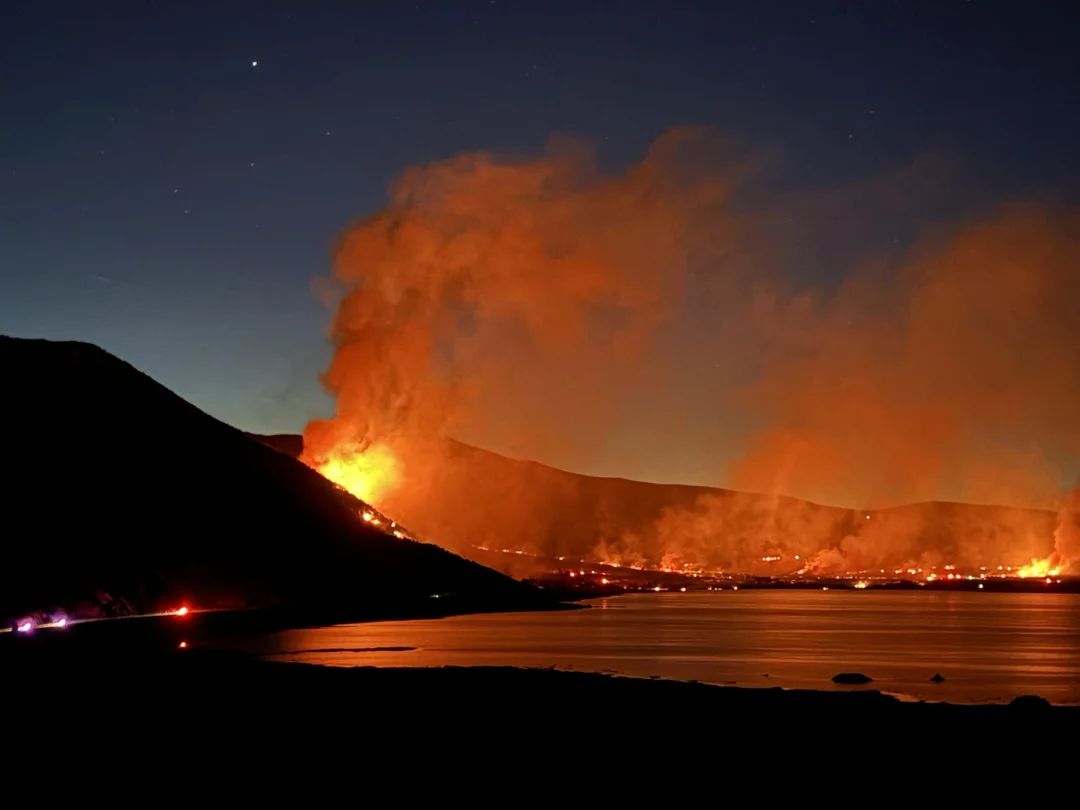
How a Sudden Wildfire is Upending Life in California’s Sierra Nevada
As wildfires rage across California, the Inn Fire near Mono Lake has emerged as a stark reminder of the growing threats from climate-driven disasters. This blaze, igniting amidst dry winds and warm weather, has forced evacuations, shut down a major highway, and disrupted tourism in a region known for its breathtaking landscapes. With Memorial Day weekend on the horizon, the incident highlights the increasing vulnerability of remote communities to environmental hazards.

The Inn Fire erupted around 3:30 p.m. on Thursday, May 23, 2025, just south of Mono City in California's Eastern Sierra. Starting on the west side of U.S. Highway 395, the fire quickly spread to both sides, fueled by gusty winds up to 35 miles per hour and parched vegetation. By Friday morning, it had scorched approximately 540 acres, with no containment reported, according to the U.S. Forest Service. One structure has already been impacted, though details remain unclear, underscoring the fire's aggressive advance toward populated areas.
Authorities responded swiftly, issuing a mandatory evacuation for Mono City, a small community of about 200 residents nestled between Tioga Lodge and Mono Inn. The Mono County Sheriff's Office coordinated the effort, directing evacuees to centers in Bridgeport and Lee Vining. Highway 395, a critical north-south route linking rural towns and leading to Yosemite National Park, was fully closed from Lee Vining to State Route 167 due to downed power lines and safety concerns. Drivers faced detours adding hours to their journeys, evoking memories of a 2023 avalanche that similarly isolated the area.
This incident is part of a broader wave of brush fires across California in recent weeks, as warmer temperatures exacerbate drought conditions. Experts like Chloe Castillo from Cal Fire noted the fire's slow creep northward, with crews focusing on containment through aerial water drops from Mono Lake and ground efforts by hotshot teams. The timing is particularly worrisome, coinciding with an expected influx of tourists for Memorial Day. Bodie State Historic Park, nearby, reported smoky haze and reduced visibility, potentially dampening visitor numbers and local economies reliant on seasonal traffic.
Comparisons to past events reveal a pattern: just as the 2023 avalanche highlighted infrastructure vulnerabilities, the Inn Fire exposes the escalating risks from climate change. While investigations into the cause continue, factors like dry winds and human activity in fire-prone zones are under scrutiny. As one official stated, "This fire has the potential to get larger and move quickly," emphasizing the need for proactive environmental policies.
In summary, the Inn Fire not only disrupts daily life but also serves as a wake-up call for better wildfire preparedness in California's wildlands. What measures can communities take to mitigate future threats? Share your thoughts in the comments below and help spread awareness by sharing this article.